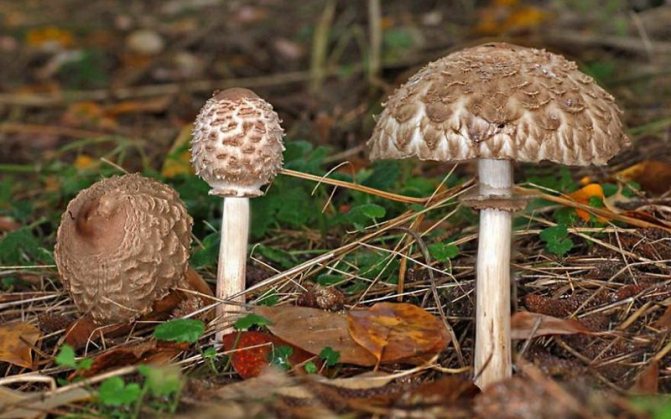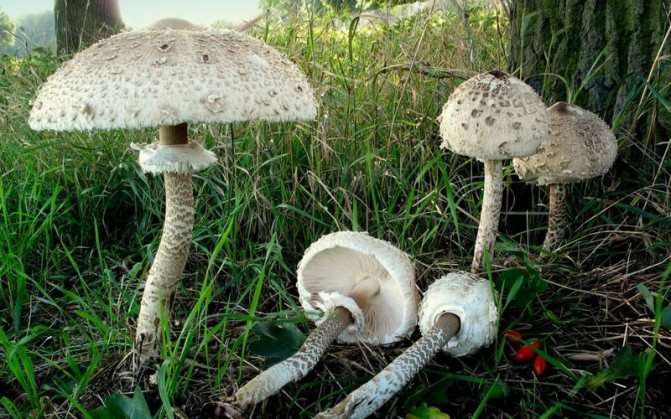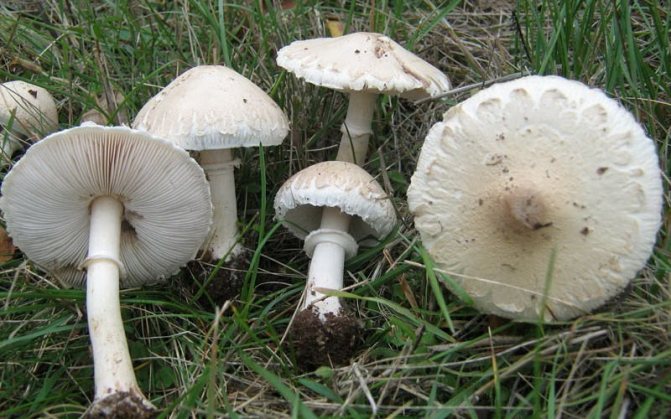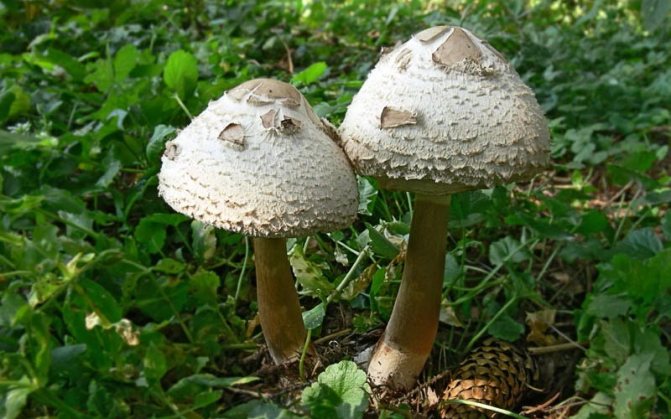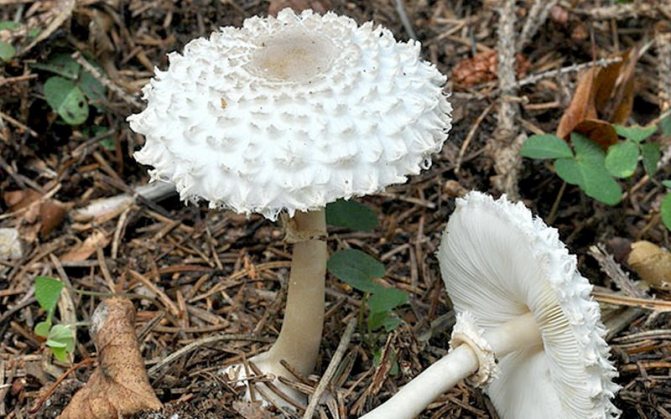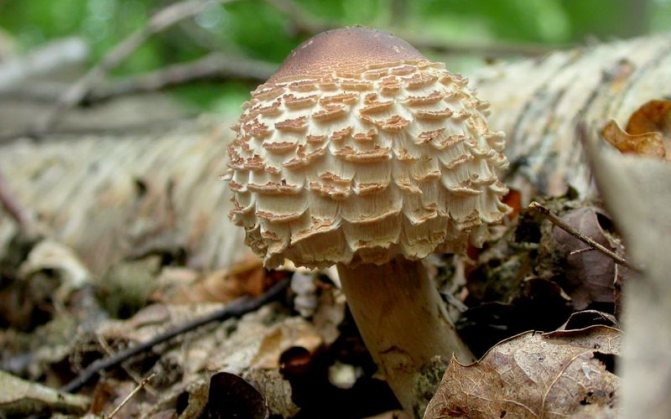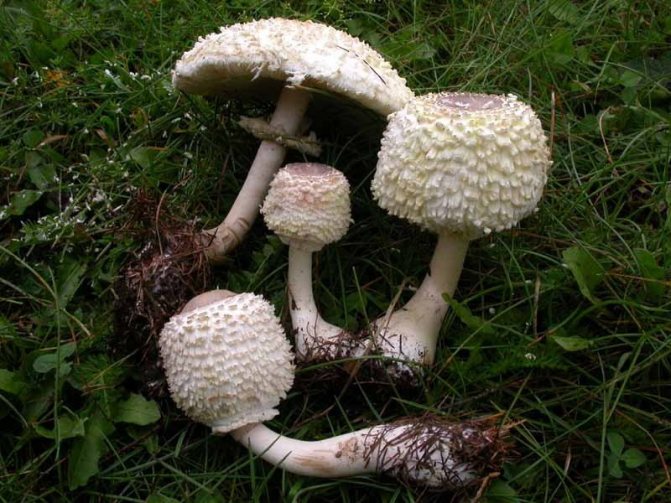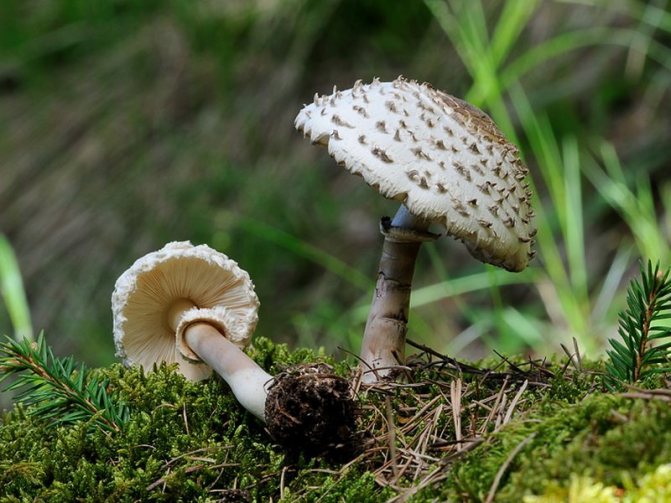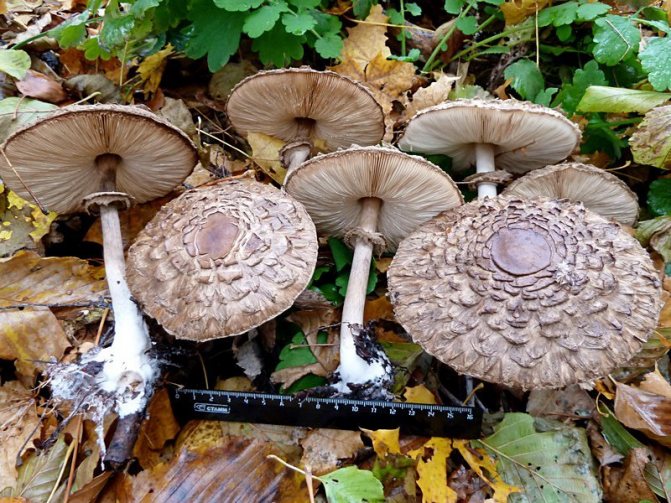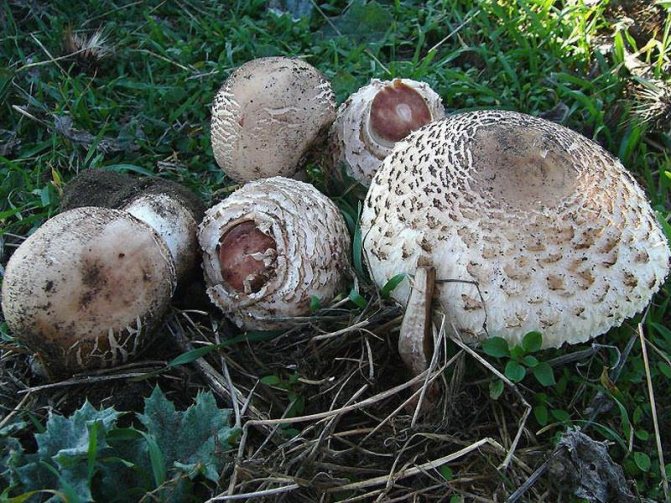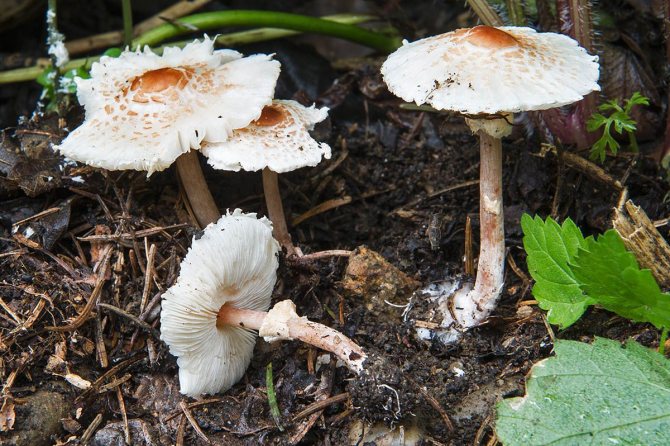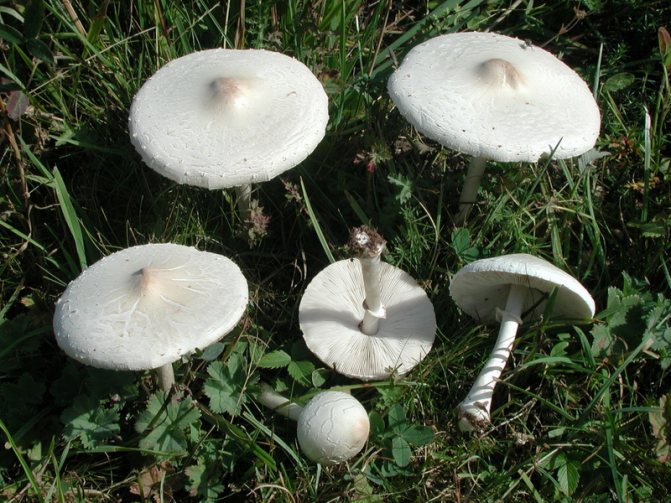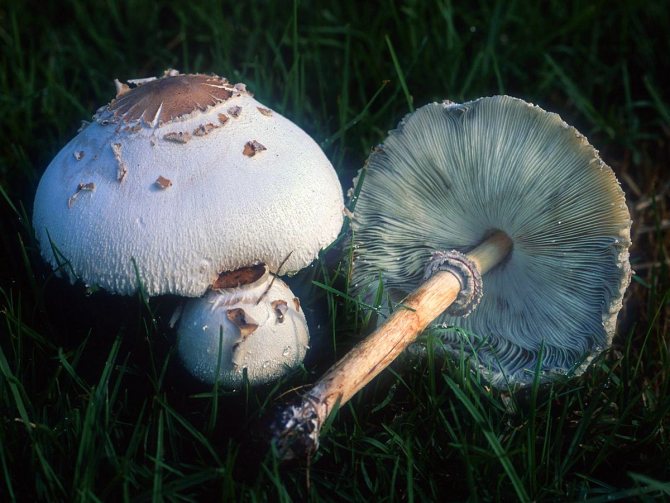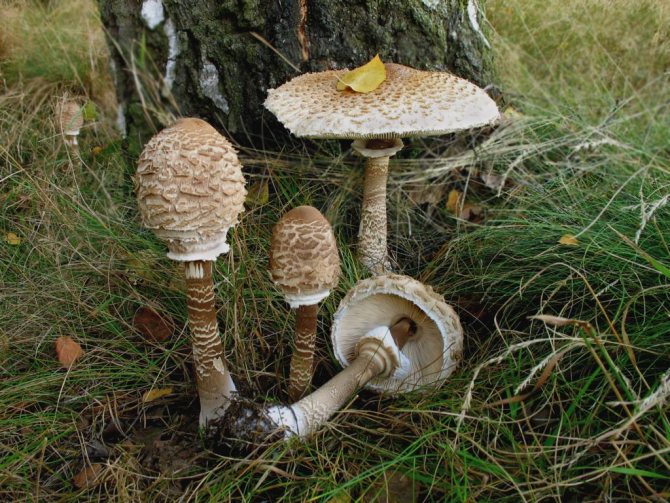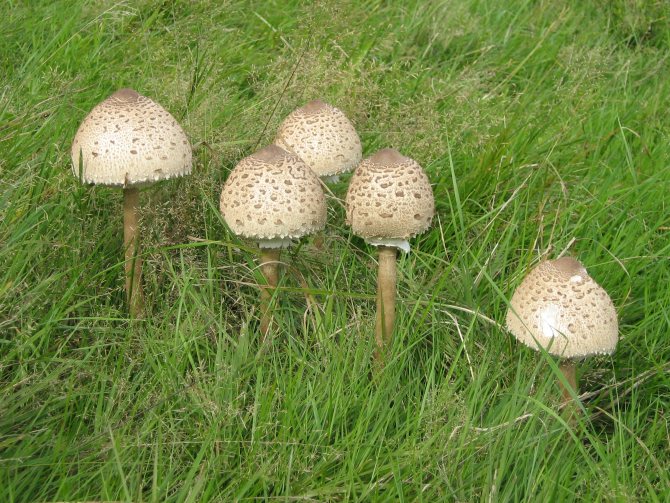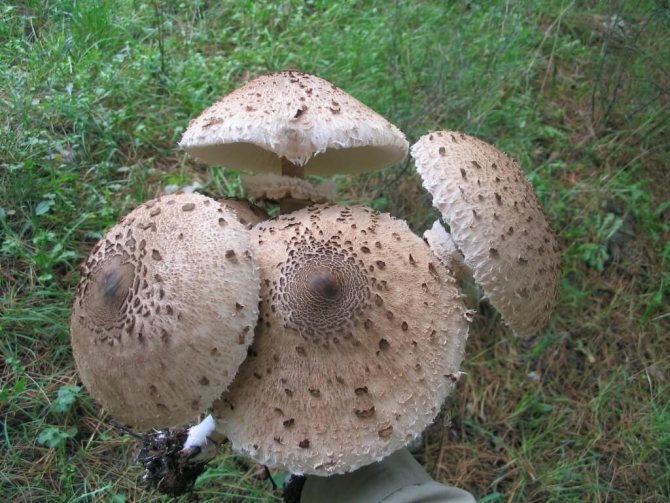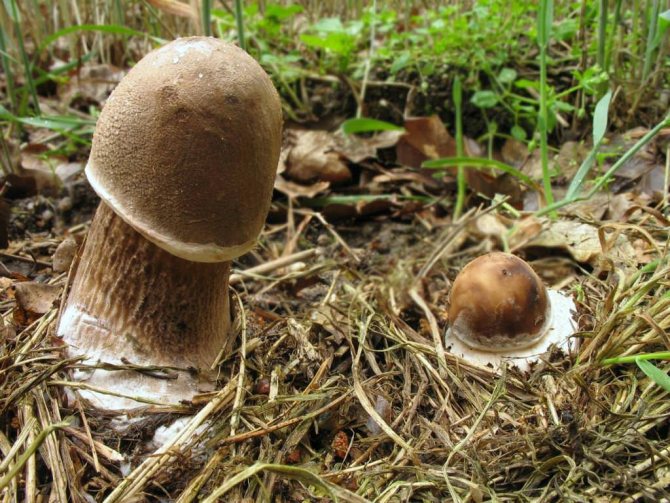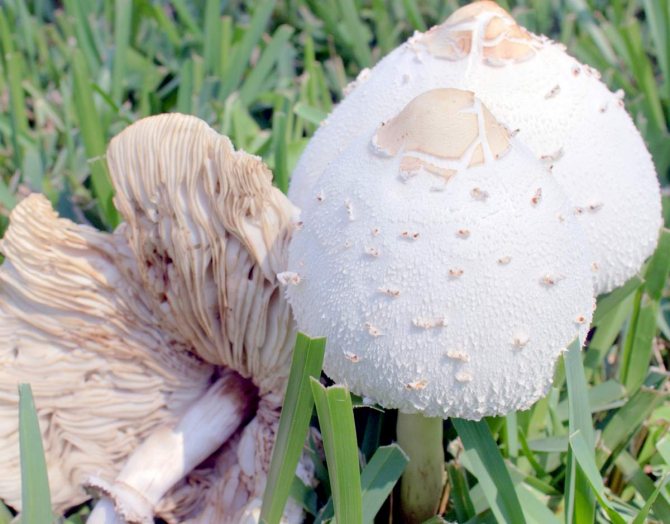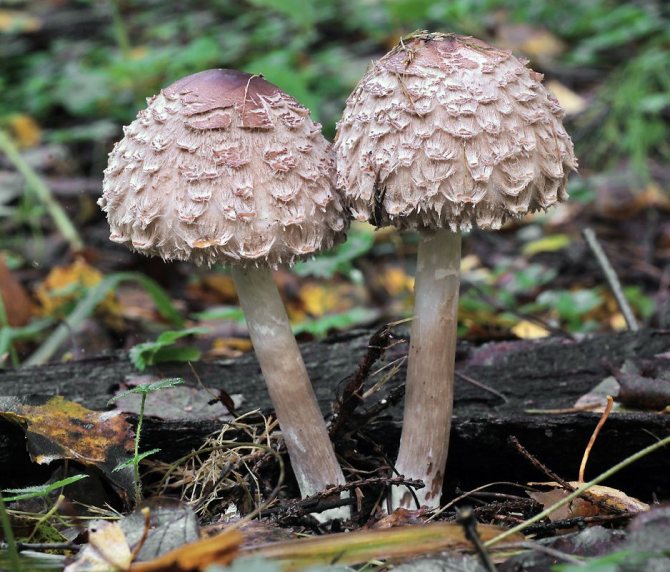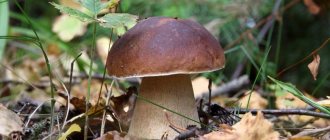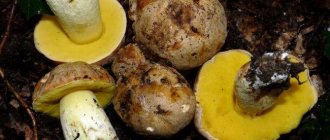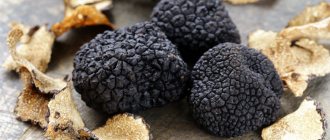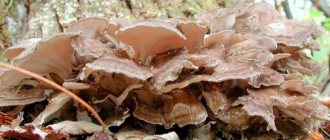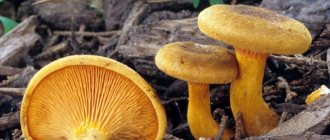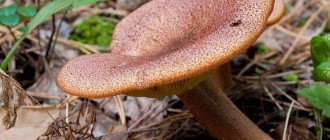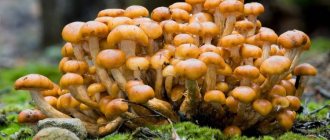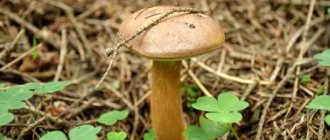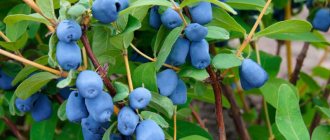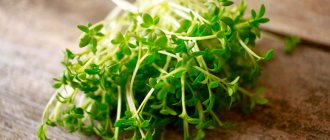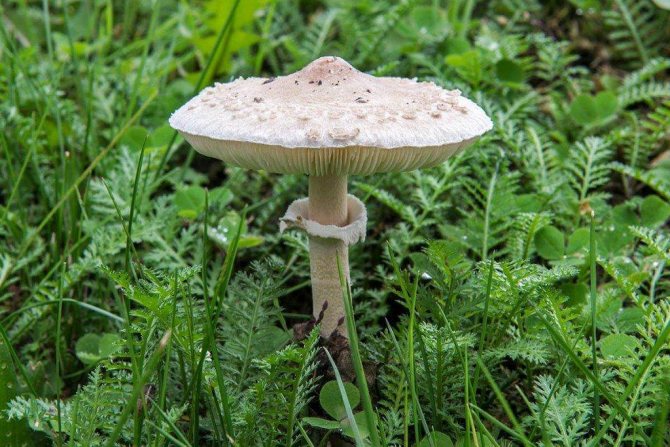
Umbrella mushrooms are infrequent guests in mushroom pickers' baskets, and all because of their similarity with some types of dangerous fly agarics. And if less experienced mushroom lovers usually either bypass them, or ruthlessly crush them with boots, experienced mushroom pickers know that the mushrooms they meet are not only edible, but also have an excellent taste. Some of their varieties are generally considered delicious. This statement, however, does not apply to all umbrellas. In this family, the most common and popular for collecting the umbrella mushroom is white, variegated and reddening - they can be safely collected, cooked, salted for the winter, and then eaten with pleasure. And in order not to confuse these mushrooms with poisonous relatives, you need to carefully study their distinctive features.
Mushroom umbrella is variegated. Description
Although almost all adult mushrooms are shaped like an open umbrella, the umbrella mushroom really deserves its name. In its "youth" the mushroom looks like a folded umbrella, in which the knitting needles are tightly pressed against the "umbrella handle" leg. As they grow older, the plates move away from the leg and become horizontal, which very closely resembles the umbrella opening mechanism.
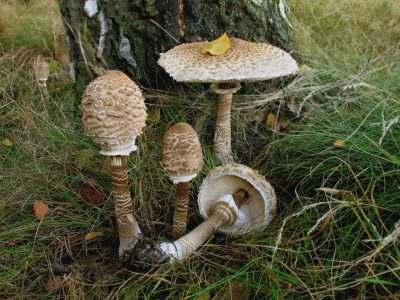

Even from the description of the variegated umbrella mushroom, it is clear that this is a fairly large mushroom. Live it impresses even more. The diameter of the cap is about 20-25 cm, and sometimes it reaches 35 cm.The leg is on average from 10 to 20 cm, although there are individuals with a height of 30-40 cm.The thickness of the leg is usually 1-2 (sometimes 4) cm. usually there is a small "skirt".
On the underside of the cap there are plates 2 cm wide at the edge, which taper as they approach the stem. The color of the plates is white; as the fungus ages, they can turn beige or cream. The leg and cap can be separated from each other very easily.
While the umbrella mushroom is young, the shape of the cap is spherical, which is why, for example, in Italy it is often called "drumsticks" in everyday life. As they grow older, the hat opens and takes on the usual umbrella-shaped shape.
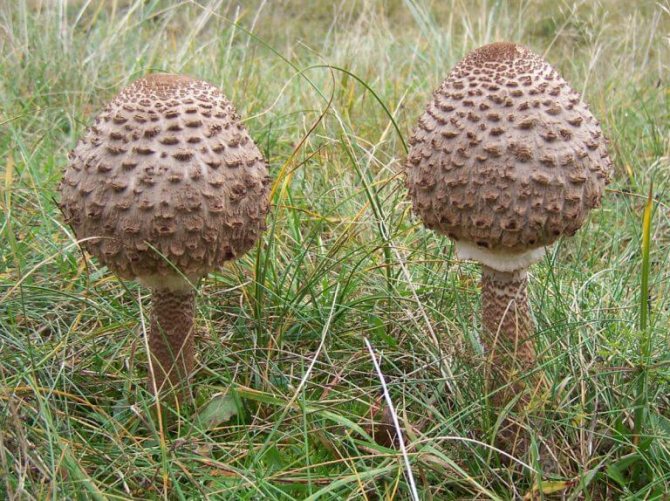

The skin on the cap has a brownish-gray tint with brown "scales". In the center, as a rule, the scales merge into a solid brown circle. While the mushroom is young, its leg has a light brown color, then it becomes a little darker and becomes covered with dark scales, which is why rings of light and dark tones are often formed on the stem.
The pulp is loose and fleshy, on the contrary dense in old mushrooms. The color is white, does not change when pressed or cut. A raw mushroom has a slight mushroom smell.
For a more complete understanding, we recommend that you see a photo of a variegated umbrella mushroom.
Option with onions and eggs
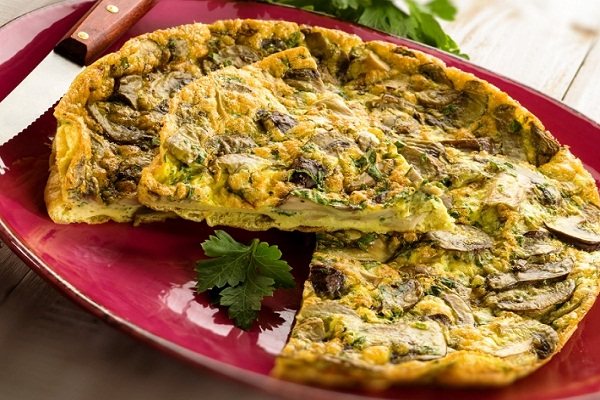

There are other recipes for fried umbrellas. For example, with onions and eggs. For cooking, you will need the following:
- fresh medium-sized mushrooms - 5 pcs.;
- 1 medium onion;
- eggs - 3 pcs.;
- sour cream - 3 tbsp. l .;
- greens to taste;
- frying oil;
- salt and spices to taste.
Preparation:
- Fry chopped umbrellas and onions until lightly browned.
- Top with a mixture of eggs, sour cream, salt and spices.
- Cover the pan with a lid and stand until the eggs are ready.
If desired, the recipe for fried umbrellas with onions and eggs can be supplemented with cheese. To do this, grate it on a coarse grater and sprinkle on top a few minutes until tender.
Mushroom umbrella variegated - edible or not?
Many good edible mushrooms have their "evil" counterparts among their poisonous counterparts. The motley umbrella is no exception in this matter. In view of this, the old rule does not lose its relevance: take only well-known mushrooms and leave those that cause the slightest doubt.
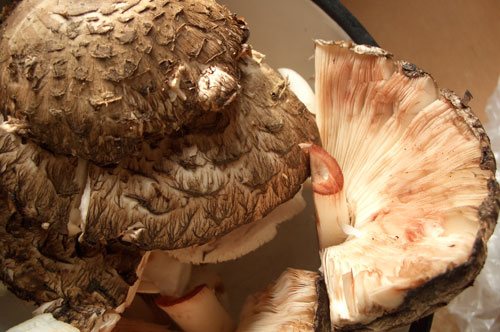

Before you go on a "quiet hunt", carefully study the photo and description of the variegated umbrella mushroom. In appearance, it is very similar to mushrooms from the genus of amanita - pale toadstool and gray amanita. It is for this reason that many mushroom pickers, especially inexperienced ones, completely ignore the umbrella mushroom, which, with a lack of experience, is, of course, absolutely the right tactic.
The main differences from poisonous counterparts:
- The "skirt" of the umbrella mushroom is a three-layer ring that is not attached to the stem and can easily move vertically;
- an edible mushroom does not have any other "blanket" remnants that poisonous ones always have;
- the hat of the umbrella is matte, and that of the fly agaric is, on the contrary, shiny and smooth;
- the cap of the fly agaric is covered with rare specks, while the umbrella has more of them, and in the central part they merge into a single, smooth circle;
- Toadstools can often be identified by the greenish or olive color of the cap, which is uncharacteristic of the umbrella mushroom.
We hope you have now figured out the question of whether the mushroom is edible or not.
How to pickle
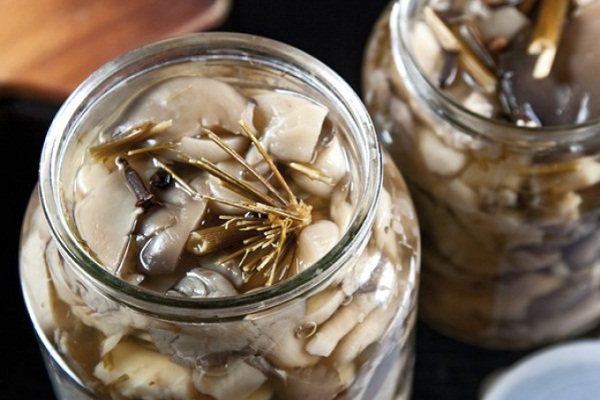

Lovers of blanks may like pickled umbrellas. To prepare them, you will need the following:
- 2 kg of peeled mushrooms;
- 2.5 l of water;
- 6 tbsp. l. salt;
- 10 g citric acid;
- 2 tbsp. l. Sahara;
- cloves, cinnamon and pepper to taste;
- 5 tbsp. l. 6% acetic acid.
Process step by step:
- The mushrooms are sorted out and washed from sand and other contaminants.
- Boil in lightly salted water until they settle to the bottom.
- Boiled umbrellas are thrown back in a colander and allowed to drain.
- A marinade is prepared from the ingredients described above.
- After boiling, mushrooms are dipped in the marinade and poured into vinegar.
- Boil for 10 minutes.
- Packaged in sterilized jars and sealed.
Mushroom umbrella motley: photos of edible and poisonous species
In addition to toadstools and fly agarics, the variegated umbrella mushroom can be confused with its other close relatives. In particular, under the guise of a harmless motley one, you can accidentally put an umbrella of acutesquamose purple in the basket. This mushroom can be recognized by its unpleasant odor and bitter taste. So if the cooked mushroom tastes bitter, spit it out immediately and see your doctor immediately.
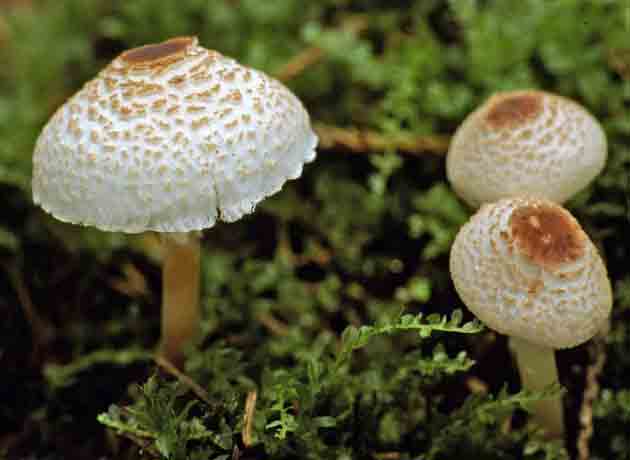

Another evil twin of the motley one is the comb umbrella. Fortunately, it is quite easy to recognize it by its significantly smaller dimensions: the diameter of the cap is only 2-5 cm. The masteoid umbrella is slightly larger - the cap is 8-12 cm, which is already close to the norm for a variegated umbrella.
But the most dangerous is the fleshy reddish umbrella, the use of which is fatal. However, it is also given out in small sizes - the diameter of the cap usually does not exceed 2-6 cm.
Once again, we remind you that in case of the slightest doubt, pass by the mushroom, no matter how seductive it may seem.
What it looks like and where it grows
The umbrella mushroom is found on almost all continents, with the exception of Antarctica. It is hard not to notice it, as its shape and size are immediately evident. Usually this lover of light forests and open fields grows to a solid size. Fully opened, his hat resembles an open umbrella towering on a long white leg. Such a mushroom itself asks for hands and especially often children show interest in it, sometimes confusing edible and inedible varieties.
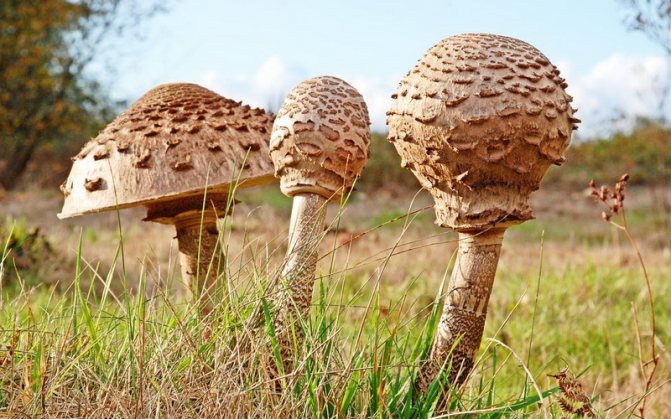

Considering this, it is very important that the mushroom hunt is supervised by experienced adults... But this mushroom is insidious in that it can be found not only in the forest, but also in any open glades, even in garden plots.If such an umbrella mushroom grew right in the garden, the main thing is to correctly determine whether it is an edible specimen or a toadstool. The edible mushroom has many subspecies, but toadstools also have a whole army of similar false species. Edible umbrellas belong to the type of champignons and have a pleasant taste and aroma. But this, of course, does not mean that they should be eaten raw.
Porcini mushroom: description, features of preparation and preparation
The Latin name of the mushroom is macrolepiota, it is formed by two words: "macro" (means "large") and "Lepiota" (means the genus of mushrooms). It is no coincidence that the word "macro" appeared in the name; the edible umbrella mushroom is usually of impressive size. It can grow up to a height of 40 cm with a cap diameter of up to 35 cm.
Interestingly, the hat does not immediately take on the appearance of an umbrella, at first it has a spherical shape and opens only over time.
How to cook a variegated mushroom umbrella
Unlike most mushrooms that are eaten whole, when preparing an umbrella mushroom, a variegated leg is usually thrown away, since it is quite tough and fibrous. But the hat, on the contrary, is very soft and fleshy.
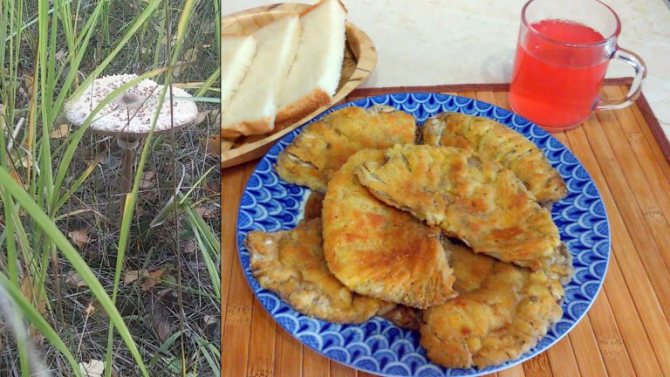

Of course, any housewife can come up with a lot of recipes on how to cook a variegated umbrella mushroom. The easiest option is to simply fry the hats in sunflower oil or stew them in sour cream. In principle, the caps can be cut into pieces so that they can be used as a classic addition to mashed potatoes. But many gourmets prefer to fry the caps whole, like pancakes. Having rolled them in breadcrumbs or flour (you can with an egg), the hats are fried first from the bottom side, and then from the top.
It is a good idea to use an umbrella mushroom to make soup. Also, young umbrellas are often pickled raw for the winter.
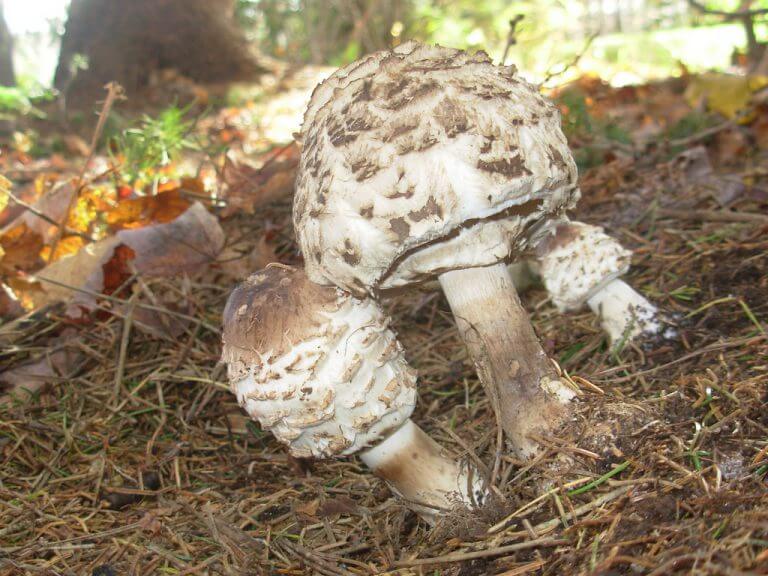

As mentioned, the most interesting are the fleshy soft hats, but not everyone agrees that the legs should just be thrown away. Since they are really tough in their original form, you can grind them in a meat grinder and, after frying, add them to soup, mashed potatoes, or use them as a putty for sandwiches. Mixed with meat or mashed potatoes, grated mushroom legs can be put on dumplings or pies.
Useful properties and contraindications
Despite its dubious appearance, the beneficial effect of the umbrella on the human body has been noted for a long time:
- Fight against cancerous tumors. The beta-glucans and melanin contained in umbrella mushrooms have a positive effect on the entire body and the immune system in particular. They stabilize the metabolic process and stimulate its work. This effect is a sure barrier against cancer.
- Improves the work of the cardiovascular system. Its use improves the functioning of the hematopoietic organs, and also strengthens the blood vessels. It also helps to relieve severity of heart problems.
- Fighting depression. With regular use, it has a beneficial effect on the functioning of the brain and helps to avoid anxiety and mental exhaustion.
- Normalization of the thyroid gland. The composition includes riboflavin (vitamin B2), which has a positive effect on the function of the thyroid gland, it also protects the skin, hair, nails.
- Improving metabolism. PP trace element helps to accelerate metabolic processes.
- Release of "bad" cholesterol. Lecithin, which is part of the mushroom, removes excess cholesterol from the body and balances its level.
Contraindications
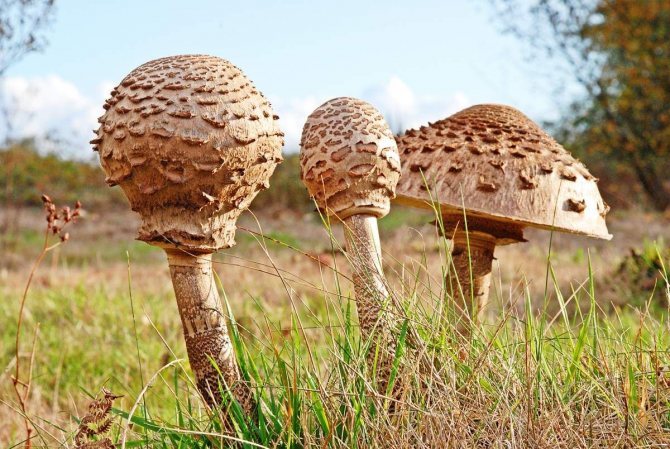

This representative of the kingdom of mushrooms is considered safe, but in order to avoid health problems, it is necessary to familiarize yourself with the contraindications to its use:
- Individual intolerance.
- Increased work of the bladder.
- Liver disease.
- Diseases of the intestines, stomach and pancreas.
- Children under 6 years of age and pregnancy.
Breeding an umbrella mushroom
The variegated umbrella mushroom belongs to the champignon family, that is, it is a close relative of the garden champignon - the same one that accounts for 80% of the world harvest of artificially grown mushrooms. However, despite such eminent relatives, the umbrella mushroom itself has not yet been "domesticated". Although attempts at artificial cultivation are ongoing, an economically viable technology has not yet been found.
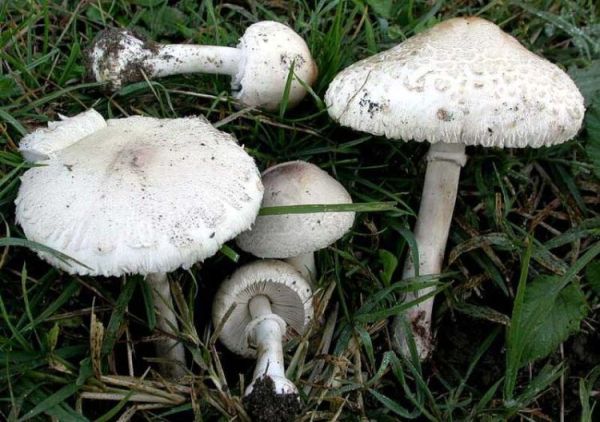

Despite the stubborn desire of the umbrella to remain a wild-growing mushroom, you can still plant it for personal purposes. Of course, we are not talking about guaranteed high yields here, but it is still possible to grow a bucket or two of these mushrooms for a family table. The main thing is to carefully study the photo of an umbrella mushroom of variegated edible and poisonous twins, so as not to accidentally start breeding fly agarics.
Blanks for future use
Umbrellas, like other mushrooms, can be harvested for future use. But the harvesting technology is slightly different from most mushrooms.
Pickled umbrellas
Very few pickle umbrellas. Usually it is not possible to collect a lot of them, mushrooms rarely grow in whole meadows. A dozen umbrella hats are already considered a good "catch". But if you managed to get a lot of young umbrellas, be sure to try pickling them. Prepare pickled umbrellas
very simple.
- Peel a kilogram of mushrooms from hard scales, rinse under running water and put in a colander to drain excess liquid. Dip in boiling salted water. Many people recommend adding a splinter of citric acid when cooking. Skim off the foam regularly during cooking.
Prepare the marinade separately. For two glasses of water, add a heaping tablespoon of salt, half a tablespoon of sugar, 3 tbsp. spoons of 9% vinegar. From spices with umbrellas, black peppercorns, allspice, cloves, bay leaves, cinnamon go well. The amount and set of spices can be adjusted at your discretion.
Transfer the boiled umbrellas to the marinade, boil for literally 5 minutes.
Put the hot mushrooms in sterile jars, fill with marinade and roll up immediately.
Despite the addition of vinegar, it is better to store pickled umbrellas in a cool place - in the refrigerator, on the balcony or in the underground.
Mushroom powder
Mushroom connoisseurs and connoisseurs often use umbrellas mushroom powder
... When dried, their aroma only intensifies. It turns out a great seasoning that can be added to mushroom, vegetable soups, main courses. Making mushroom powder is not very difficult. Mushrooms do not need to be washed before cooking - as a last resort, gently wipe them with a wet cloth.
- Cut the mushrooms into equal, not too large pieces.
Line a baking sheet with pastry paper. Spread the mushrooms on it evenly, in one layer and place in the oven on low heat. You can use a special dryer for herbs and vegetables. Dry until the mushroom slices are slightly flexible. Bring to dryness in a well-ventilated, shaded area.
Grind the dried mushrooms in a blender, coffee grinder or meat grinder. The more homogeneous the powder is, the more flavor it will give to the dishes to which you will add it.
The finished powder should be well dried. Wet will quickly grow moldy. Store in glass jars. Instead of lids, use canvas or paper. Check from time to time to see if the powder is damp.
Study carefully and remember the photo of the mushroom. If you come across it in the forest, be sure to take it and try it. If you are in doubt whether the mushroom is in front of you, pay attention to the scales and the ring on the leg. The scales are rather large, dense, and dark in color. The ring is wide, easy to move along the leg. In poisonous mushrooms resembling an umbrella, the ring disappears very quickly and does not move along the stem.
Since the beginning of summer, when the mushroom season has not even thought of coming, on the sides of roads and highways you can see unusual mushrooms with a wide disc-shaped cap on a long and thin stem. Many people take it for a fly agaric or a toadstool, although it does not at all look like a toadstool. In fact, this is an umbrella mushroom, quite edible and even very tasty mushroom. What is an umbrella mushroom - we will study the recipes and properties of this representative of the forest world in this article.
Growing an umbrella mushroom in the garden
If you suddenly do not know, we are glad to enlighten you that mushrooms reproduce in two ways:
- Through the mycelium. It is a kind of rhizome or underground part of the fungus colony, from which the aboveground part, called the fungus itself, grows.
- Disputes. Something like seeds (only much smaller) that ripen in a mushroom cap.
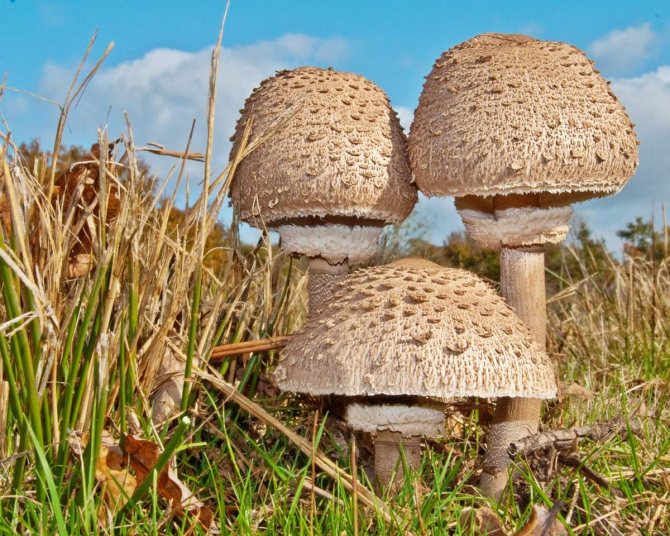

Since the cultivation of umbrellas is still the lot of individual and very small amateur gardeners, you will not be able to purchase mycelium anywhere. The only way to get it is to dig it out in the forest yourself. However, the likelihood that after transplantation it will take root in a new place is extremely small.
You won't be able to buy disputes either. But you can get them yourself - in the forest. To do this, you need to find an old flabby umbrella mushroom, bring it home and sow it on the site. Sowing is carried out as follows: a mushroom cap is pricked onto a tree branch or suspended in a different way (even on a rope) over the area where it is planned to grow mushrooms. In a suspended state, the mushroom dries up, and the spores inside the cap ripen and eventually spill out onto the ground, sowing the area.
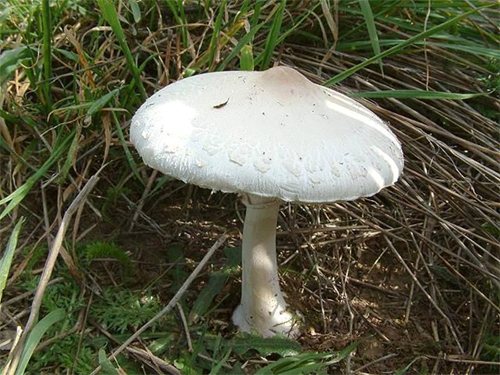

To ensure at least a minimal chance that the umbrella mushroom will take root on the site, you should properly prepare the garden bed. The umbrella loves calcium-rich soils, so it is worth fertilizing the garden with calcium carbonate. By the way, as mentioned above, the umbrella is related to mushrooms, and their cultivation is now on stream, which is manifested, among other things, by the abundance of ready-made soil concentrates on the market. These concentrates are also suitable for the umbrella mushroom.

